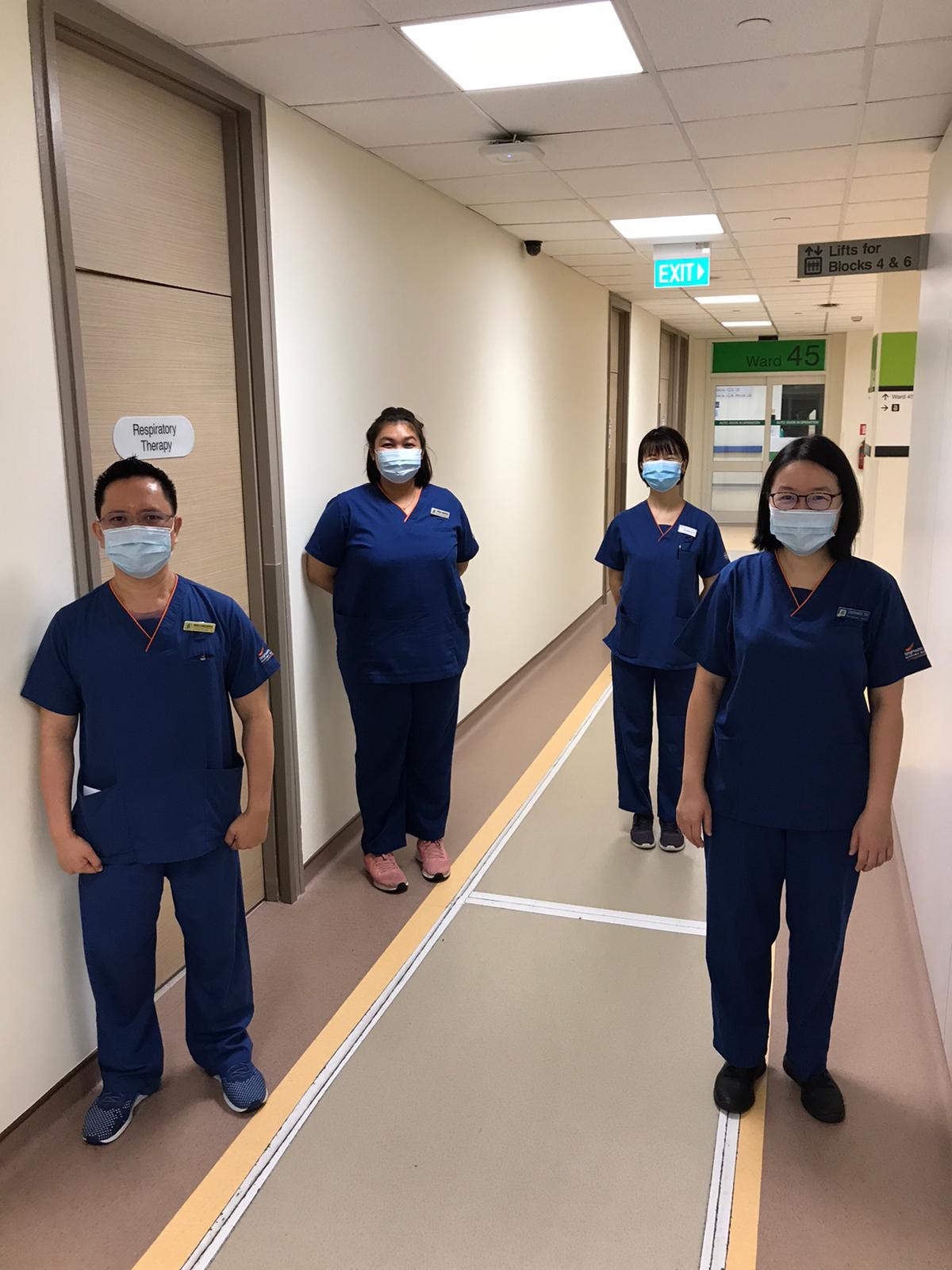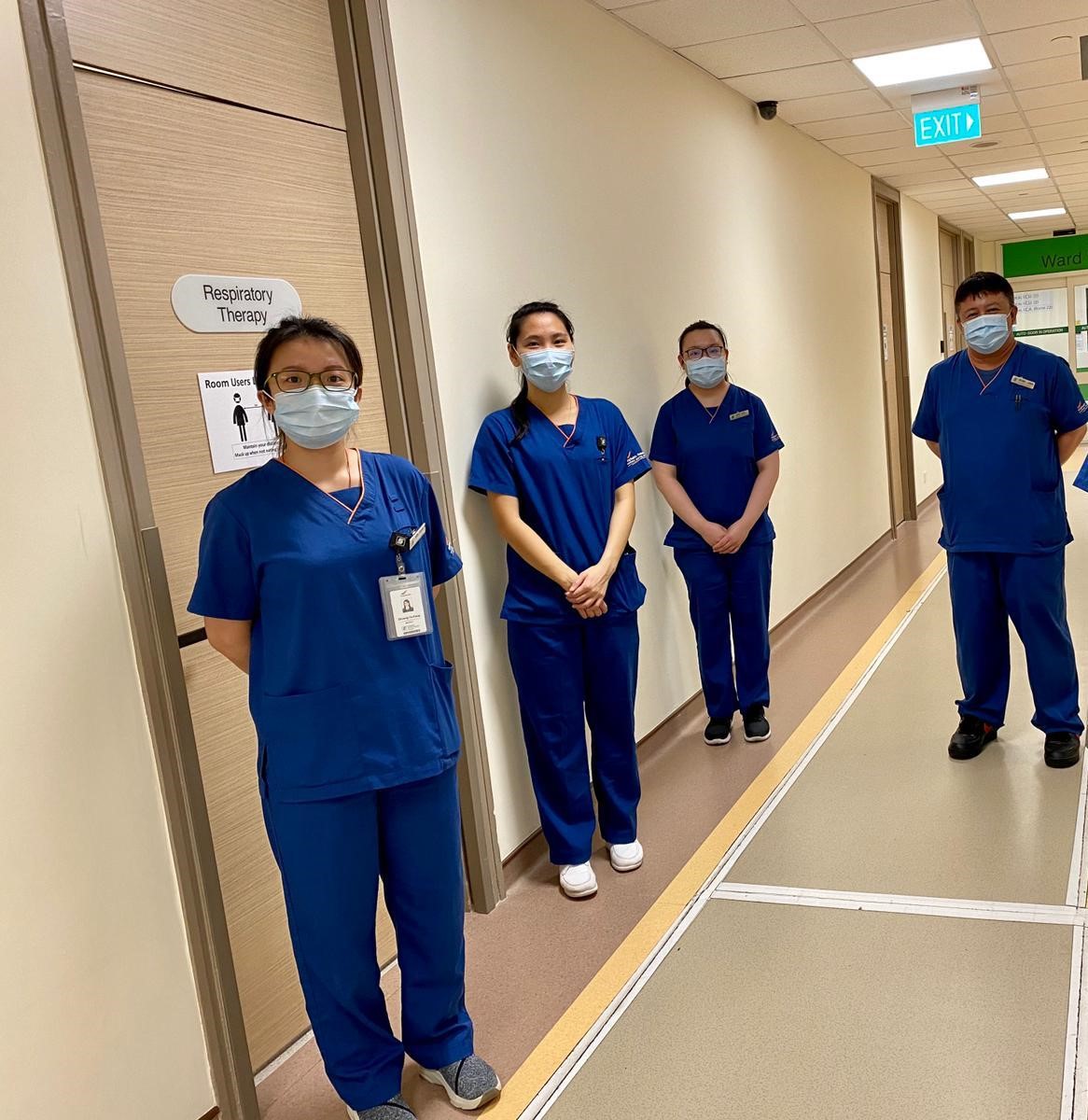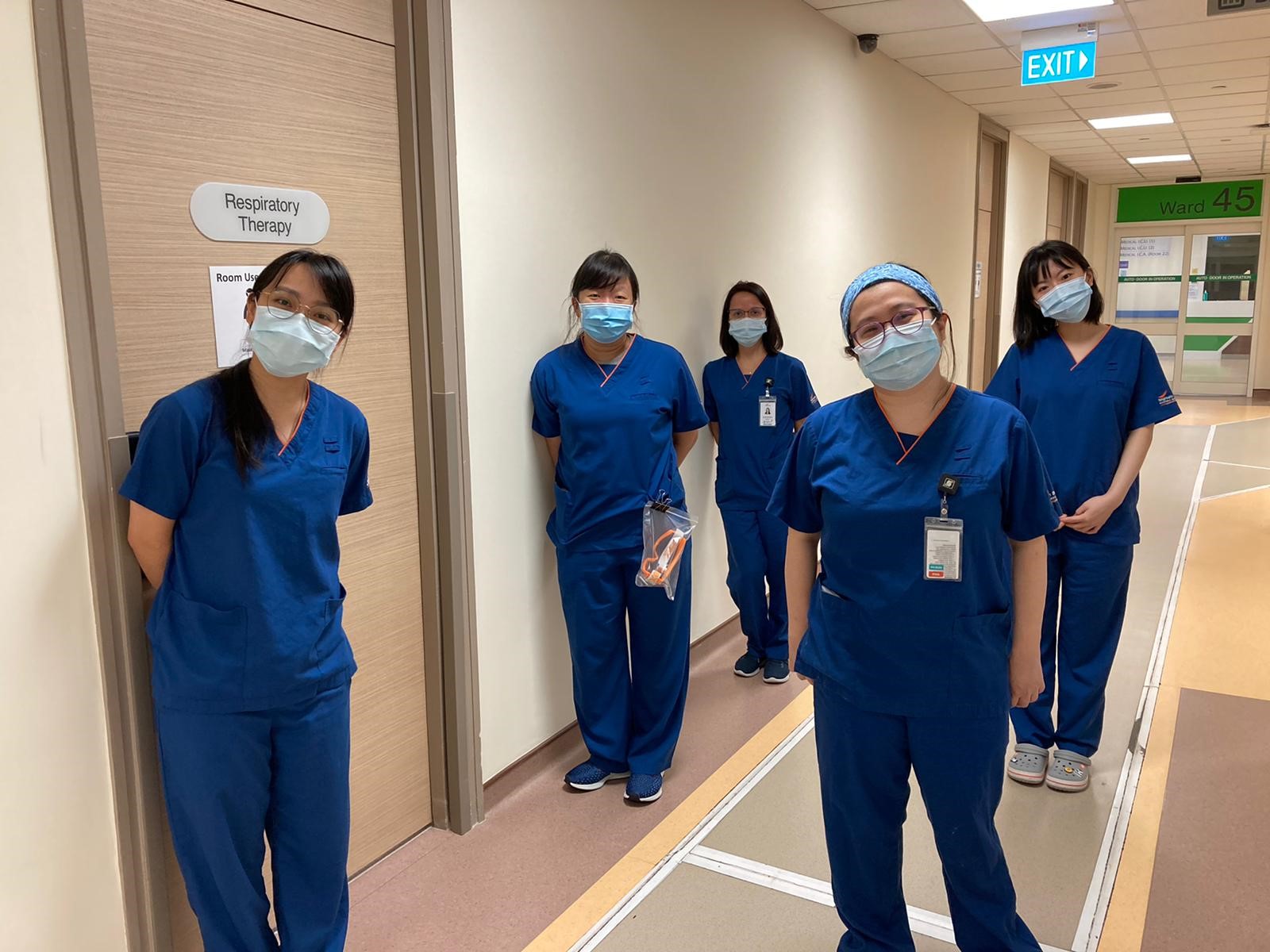Many severely ill COVID-19 patients required breathing support, and Respiratory Therapists are the experts monitoring and managing the ventilators to keep them alive.
When COVID-19 struck, many of the severely-ill patients were placed on ventilators as they required breathing support. And the world became more familiar with a group of healthcare professionals called “Respiratory Therapists”.
A profession most unique
“You are most likely to find our Respiratory Therapists (RT) in the Intensive Care Unit (ICU) and Intermediate Care Area ,” said Constance Teo, who leads a lean team of 11 RTs. They focus on critically-ill patients in SGH round-the-clock, closely monitoring and managing the breathing support of each patient.
This focus on providing critical care makes Respiratory Therapists unique among the allied health professions. RTs are involved in every step of a patient’s journey in the ICU, from the initiation of ventilator support, supporting intra-hospital transport, assisting in procedures such as bronchoscopy, weaning ventilator support or even transiting to other ventilator adjuncts such as mask ventilation. RTs also care for a small group of patients who need further breathing support during rehabilitation or transition to home ventilation.
The tough gets going
When COVID-19 struck, RTs were right there on the frontline, involved in aerosol generating procedures – intubation, non-invasive ventilation, bronchoscopy, resuscitation – for critically-ill COVID-19 patients.
Even transporting COVID-19 patients from the ICU for scans or to the Operating Theatre is a risky process that had to be highly coordinated to minimise the risks of exposure to the virus. RTs ensure that the breathing tube is secured, transport ventilator circuit is tightly connected and monitor the patient closely. They accompany every patient who is on the move, ready to quickly react to any changes to ensure that patients tolerate the transport well.
“Speaking for my team, we were not afraid to care for COVID-19 patients,” said Constance. “We knew we were safe as there were good and clear guidelines and protocols. We also prepared by performing simulations of ICU procedures and constantly communicating with the rest of the ICU team.”
“We kept up-to-date with developments in clinical knowledge and management and published in international journals to share the SGH experience. Together with the doctors and nurses, we also planned for potential ICU surge by providing ICU refresher or training for non-ICU doctors and nurses, and building buffers in the ICU equipment and consumables,” said Constance.
All this work was done while providing their routine services, which could not stop as there will always be non-COVID-19 patients who become critically-ill and require ICU admission.
As essential as breathing
RTs are also part of the 3-man Code Blue Team activated to resuscitate patients throughout the hospital who have collapsed. Being an essential hospital service, this role was expanded during the COVID-19 pandemic. The new Ward @ Bowyer set up in a carpark presented additional challenges, as it is situated apart from the main SGH building. “In a Code Blue Team, the RT is responsible for transferring the resuscitated patients to the ICU. For Ward@Bowyer, the RT will accompany the patient to the ICU in an ambulance,” explained Constance.
A bond not easily broken
“The community of RTs in Singapore is very small, because the RT degree is not available locally,” pointed out Constance, who trained overseas on a SGH scholarship.

Local and foreign RTs work closely together.

RTs work in rotating shifts 24/7 to ensure continuity of care for critically-ill patients.
She is especially grateful for her team members who rose to the occasion during this pandemic. The RTs have been working tirelessly as having separate Isolation ICU/HD for suspected and confirmed COVID-19 patients meant that more RTs are needed to man the different locations
With annual leave cancelled in the early months of the pandemic and travel advisories in place, the RTs have had little downtime. Seven of our 11 RTs are from the Philippines and Taiwan. “They have not been able to visit their loved ones at home since February,” said Constance.
To try to augment the staffing in preparation of potential ICU surge, Constance reached out to former colleagues who had left the profession. Among those who stepped forward is Nancy Lew, who has switched tracks to Medical Informatics in SingHealth.
“When I heard about preparations for an ICU surge, I realised I am probably the only ‘spare’ RT in the organisation,” said Nancy, who left the profession about 7 years ago but has kept in touch with her former team mates. Knowing that SGH needed more RTs, Nancy agreed to help out.
With the blessings of her bosses, Nancy was put through the paces, learning new ventilators, revisiting care management principles and procedures. In the beginning, in April, she would work 2 days a week as an RT, while carrying on her work in Medical Informatics. With the RTs continuing to support the Isolation ICU and other ICUs, she now helps out a few days a month as a RT.
“I am glad that the ICU surge didn’t come straight away, so I had time to re-orientate myself. If a surge were to happen now, I am able to perform the basic and routine tasks, as well as care for the patients. However, I would still need to consult my fellow RTs when faced with a less commonly seen equipment issue,” confessed Nancy.

Once a RT, always a RT - Nancy Lew from Medical Informatics (second from left) with fellow RTs.
Dealing with mortality is part of ICU. But Constance remains undaunted. “The most gratifying part of our work is to see a patient who was at death’s door make a full recovery, and return to their loved ones,” she said.
We love mail! Drop us a note at [email protected] to tell us what you like or didn’t like about this story, and what you would like to see more of in LighterNotes.
